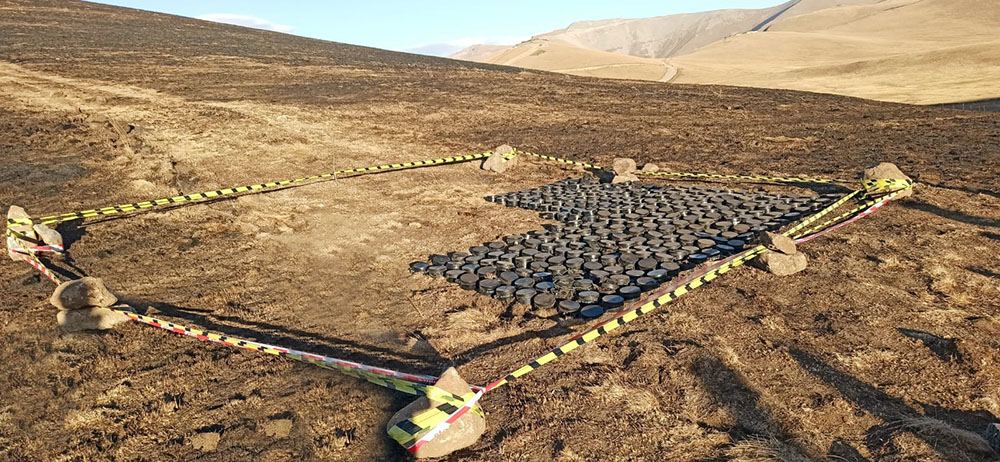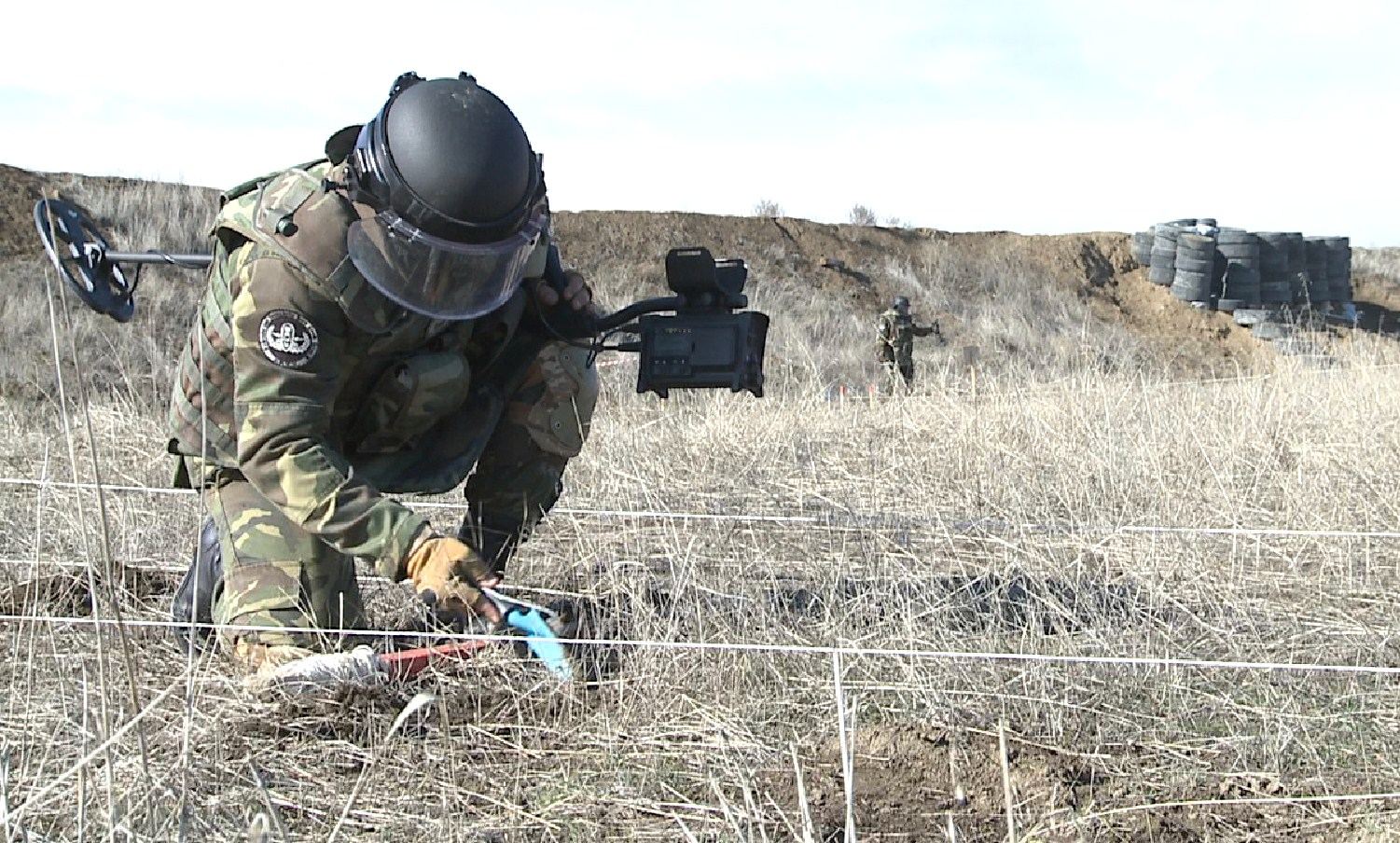Landmines, unexploded ordnance remain obstacle for future development of South Caucasus Opinion by Commonspace.eu
Onnik James Krikorian, a British journalist, has written an article about the ongoing mine threat in Azerbaijan. Caliber.Az reprints the article.
As thousands of Internally Displaced Persons (IDPs) return to their former places of residence in the seven regions surrounding what remains of Nagorno Karabakh, the problem of landmines and unexploded ordnance (UXO) is as pressing as ever. Last month, Vugar Suleymanov, Chair of Azerbaijan’s National Agency for Mine Action (ANAMA), reported that 111,207 hectares of contaminated land had been cleared in past three years since the November 2020 trilateral ceasefire statement.
This included 30,753 anti-personnel mines, 18,531 anti-tank mines, and 60,268 items of Unexploded Ordnance (UXO). There is still much to do and it will take decades, but this is also not a recent problem. It has lingered long and is not only confined to Azerbaijan, though the situation there is far worse than elsewhere in the region. Not only do mines remain from the conflict of the early 1990s, but their full number is unknown with some maps either inaccurate or even non-existent.
In 2006, as part of a decade-long coverage of the topic, and especially on the activities of the HALO Trust in Karabakh, I remember encountering a minefield close to Lachin. The road was laden with anti-tank mines. An estimated 900 PMN anti-personal mines were in an adjacent field. According to the HALO Trust, the mines had been there for over twelve years since Armenian forces scattered them indiscriminately, fearful of a possible counter-offensive by Azerbaijan.
So hastily were they strewn that some even stuck out of the grass, although the mines were also admittedly coloured green. For years they remained there, forgotten by everyone. The anti-tank mines had not detonated because no heavy traffic passed by while ethnic Azerbaijanis had fled long ago and no Armenians had yet settled their land.

Indeed, It was only when some moved to do just that, also seeking out new pastures for their livestock, that the danger was discovered. Landmines, after all, do not distinguish between ethnicity or nationality.
“A peace deal will be signed one day,” Simon Porter, then HALO Trust program manager, told me back in 2002 before explaining why clearing them was so important. “We are in the perfect situation to tackle the problem sooner rather than later. Otherwise, there will be significant problems when villagers attempt to farm their land, or when Internally Displaced People return to their homes.”
Cooperating with the de facto Karabakh authorities, there were at least some maps, but the HALO Trust also had to draw up their own. There was even a hotline allowing residents to report incidents or the discovery of both landmines and UXO. In 2009, for example, I accompanied the HALO Trust to the Amaras Monastery in southern Karabakh where a local farmer had driven over an anti-tank mine. Fortunately, his tractor took most of the blast, but he still damaged his leg and had to walk around in an orthopedic cast on crutches. No maps existed.
There was also the problem of Unexploded Ordnance (UXO) – unused munitions or those that failed to explode during fighting. In early 2001 while covering The HALO Trust in Mardakert, this included a downed combat helicopter strewn across a field, its front guns still loaded lying in one area with an almost intact pod of air-to-surface missiles in another. In Karabakh, another problem was bomblets called Shariks (balls), appropriately named as they literally resembled small metal balls.
Indeed, the following year, while covering the boarding school for the blind and visually impaired in Yerevan, I met one such victim of UXO – a child who discovered with his friends what they thought was something to play with. It exploded in one of their faces. That boy I met was Artak Beglaryan, a Karabakh Armenian who later become a senior official in the de facto authorities, holding positions that included State Minister and Human Rights Ombudsperson.
But back then, few were interested in the topic though that is very different today with the International Crisis Group (ICG) reporting earlier this year that at least 54 Azerbaijanis have been killed and over 290 injured by landmines since the 2020 ceasefire statement was signed. Indeed, both the Armenian and Azerbaijani governments, as well as international organisations, conduct awareness campaigns especially for children in schools in areas likely to be contaminated by both landmines and unexploded ordnance.
But it isn’t just Azerbaijan and Karabakh that were and are still afflicted by landmines. So too was Armenia’s pre-2020 border with those parts of Azerbaijan that weren’t occupied. Even in the early 2000s, mines had adversely affected the ability of villagers to cultivate available land with regional authorities estimating that as much as 9,000 hectares of the north-eastern Tavush region of Armenia was mined. The number of landmines was estimated to be in the thousands.

In 2002, a US-funded demining centre was even established in Etchmiadzin, just twenty minutes from Yerevan to address the problem. Leading the American training of the local sappers was Lt. Colonel Eric von Tersch who told me then that there was, however, no intention to clear defensive positions on the border.
But landmines have also been politicised. There is no point going into the accusations against the HALO Trust, but they were often for partisan reasons from all sides. But it is notable that Azerbaijan managed to veto the extension of the Organisation for Security and Cooperation (OSCE) office in Yerevan in 2017 precisely because of support for landmine clearance initiatives. Following the closure of the OSCE office in Tbilisi in 2008 and in Azerbaijan in 2015, this left the organisation with no effective presence on the ground in the entire region.
The post-2020 situation, of course, has seen that politicisation continues with mutual accusations and even the trading of landmine maps by Yerevan for Armenian detainees held by Baku. Yet things were once quite different.
In 2000, for example, the U.S. Special Forces trained joint groups of Armenian, Azerbaijani, and Georgian deminers as part of Confidence and Security Building Measures (CSBMs) called for by the OSCE and held under the Beecroft Initiative. Similar projects, as AzCAL Chairperson Hafiz Safikhanov recently noted in Baku, are not impossible in the future. Armenia, Azerbaijan, and Georgia could also sign up to the Convention on the Prohibition of the Use, Stockpiling, Production and Transfer of Anti-Personnel Mines and on their Destruction, better known as The Ottawa Treaty.
But for that, the war of words between Yerevan and Baku will likely have to stop and real tangible progress made on an agreement to normalise relations between the sides and demarcate the shared border.








